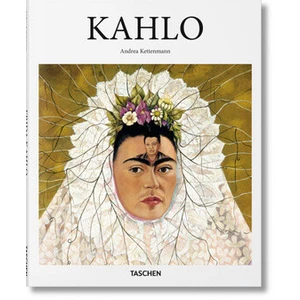The arresting pictures of Frida Kahlo (1907–54)were in many ways expressions of trauma. Through a near-fatal road accident at the age of 18, failing health, a turbulent marriage, miscarriage and childlessness, she transformed the afflictions into revolutionary art. In literal or metaphorical self-portraiture, Kahlo looks out at the viewer with an audacious glare, rejecting her destiny as a passive victim and rather intertwining expressions of her experience into a hybrid surreal-real language of living: hair, roots, veins, vines, tendrils and fallopian tubes. Many of her works also explore the Communist political ideals which Kahlo shared with her husband Diego Rivera. The artist described her paintings as “the most sincere and real thing that I could do in order to express what I felt ins
ide and outside of myself.” This book introduces a rich body of Kahlo’s work to explore her unremitting determination as an artist, and her significance as a painter, feminist icon, and a pioneer of Latin American culture. The author Andrea Kettenmann (born in 1959) studied art history in Gießen, Göttingen and Heidelberg before joining the art history department of the University of Hamburg. In 1986 she visited Mexico on a fellowship, and now lives there, working as a freelance art historian. She has now worked on a number of exhibitions and catalogues, including the catalogue for the retrospective on Diego Rivera, Frida Kahlo’s husband, in Detroit.
více
